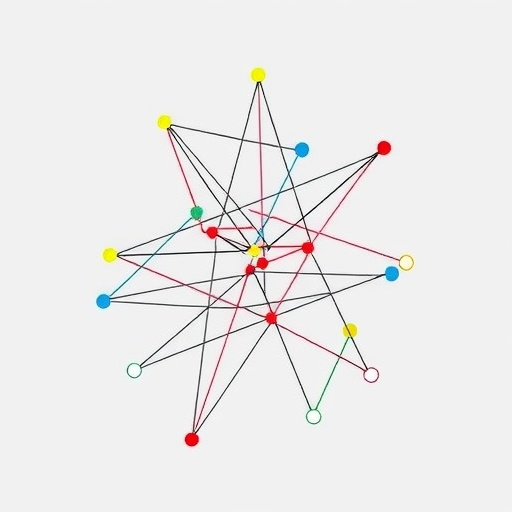In today’s data-driven world, graphs have emerged as a fundamental structure for representing complex relationships between entities. From social networks that capture human interactions to molecular graphs that model chemical compounds, and transaction networks tracing financial exchanges, these graph-structured datasets permeate numerous domains. However, effectively learning from such intricate data poses substantial challenges. Graph Neural Networks (GNNs), a class of deep learning models tailored to exploit the relational inductive bias of graphs, have established themselves as powerful tools for extracting meaningful representations. These models enable downstream tasks such as node classification, link prediction, and graph classification with impressive accuracy. Nonetheless, despite their success, GNNs are not without their limitations.
One of the primary challenges with GNNs lies in their lack of interpretability. Their complexity often obscures the reasoning behind their decisions, making it difficult for users to trust or verify the outputs. Furthermore, GNNs are vulnerable to inheriting and potentially amplifying biases embedded in the training data, which can lead to unfair or discriminatory predictions, particularly in sensitive applications like recommendation systems or fraud detection. Another inherent shortcoming is their inability to adequately model causal relationships, since GNNs typically learn correlations rather than causations. This limitation hinders the deployment of GNNs in domains where understanding cause-effect dynamics is critical.
Enter counterfactual learning on graphs — an emerging paradigm that seeks to address these fundamental challenges by introducing a causal perspective into graph representation learning. Counterfactual reasoning involves considering “what if” scenarios: examining how a model’s predictions would change if certain aspects of the input data were altered. This approach provides a mechanism for interpretability by highlighting which components of the graph influence outcomes. It also mitigates bias by enabling models to evaluate fairness counterfactually, ensuring decisions remain equitable even under hypothetical data perturbations. Additionally, counterfactual frameworks can be designed to embed causal assumptions, thereby facilitating causal inference within graph data.
A recent comprehensive survey has synthesized the burgeoning research efforts at the intersection of graph-structured data and counterfactual learning. This survey organizes the existing literature into four thematic categories based on the problems addressed: fairness, explainability, link prediction, and other specialized applications. For each category, the authors provide foundational backgrounds, real-world motivating examples, general methodological frameworks, and nuanced discussions of individual works. By doing so, they offer a structured understanding of how counterfactual techniques can be applied to diverse graph learning scenarios.
Deepening the discussion on fairness, the survey notes the critical need for equitable algorithms in graph contexts. Social networks, for instance, can reinforce societal biases if the underlying data reflects historical inequalities. Counterfactual fairness methods on graphs seek to isolate and neutralize these biases by contrasting outcomes across hypothetical scenarios where sensitive attributes change. This facet of graph counterfactual learning is pivotal to ensuring that automated decisions, such as in hiring or lending, do not propagate discrimination.
In terms of explainability, counterfactual approaches provide transparent mechanisms for elucidating GNN predictions. By perturbing graph components and observing changes in output, these methods generate human-understandable explanations for why a model reached a particular conclusion. This is especially valuable in high-stakes fields like healthcare or finance, where stakeholders require clarity and accountability from machine learning systems.
Link prediction, another key application outlined in the survey, benefits from counterfactual modeling by discerning the underlying reasons why certain connections might form or dissolve in a graph. Traditional algorithms predict links based on observed patterns, but counterfactual techniques enhance this by hypothesizing alterations in the graph structure and assessing their impact, leading to more robust and interpretable predictions.
The survey also highlights a range of auxiliary applications that harness counterfactual ideas for tasks such as anomaly detection, recommendation systems, and dynamic graph analysis. These emerging directions showcase the versatility and breadth of counterfactual learning on graphs, signaling its potential to reshape multiple facets of graph analytics.
Importantly, the survey does not only advance theoretical insights but also serves as a practical guide by compiling a rich set of resources. It curates open-source codebases, public datasets, and standardized evaluation metrics that researchers and practitioners can leverage. This “one-stop-shop” repository accelerates the adoption and further development of graph counterfactual learning techniques by lowering entry barriers and fostering reproducibility.
Looking ahead, the authors propose several promising avenues for future exploration. Integrating counterfactual reasoning more deeply with causal graph models, enhancing scalability to massive graphs, and developing universal evaluation benchmarks stand out as critical challenges. Moreover, there is a call for interdisciplinary research that bridges graph learning with ethical AI, law, and social sciences to ensure that these advanced methods are responsibly deployed in real-world scenarios.
As the complexity and ubiquity of graph-structured data continue to grow, the fusion of counterfactual learning principles holds immense promise for overcoming current GNN limitations. By providing tools for fairness, transparency, and causal understanding, this fusion empowers next-generation graph intelligence that is not only accurate but also trustworthy and ethically sound.
In summary, the comprehensive survey marks a significant milestone in consolidating fragmented advances on graph counterfactual learning into a coherent framework. Its methodical categorization, technical depth, and practical resource compilation make it an indispensable reference for anyone interested in pushing the frontiers of graph neural network research through the lens of causality and counterfactuality. As the field evolves, such bridges between theory and application will be crucial to unlocking the true potential of graph-based AI systems.
Subject of Research: Graph Neural Networks and Counterfactual Learning on Graph-Structured Data
Article Title: Not specified in the provided content
News Publication Date: Not specified in the provided content
Web References: Not specified in the provided content
References: Not specified in the provided content
Image Credits: Not specified in the provided content
Keywords: Graph Neural Networks, Counterfactual Learning, Graph-Structured Data, Fairness, Explainability, Link Prediction, Causal Inference, Representation Learning, Machine Learning, Deep Learning




